Plant Life Chapter Notes | Science Class 5 PDF Download
| Table of contents |

|
| Introduction |

|
| What is Vegetative Propagation? |

|
| Reproduction Through Seeds |

|
| Agriculture |

|
Introduction
- Did you know that all living things, including plants, have a special ability to make more of their own kind?
- The process of plants producing new plants like themselves is called reproduction.

Reproduction in plants can be divided into two types:
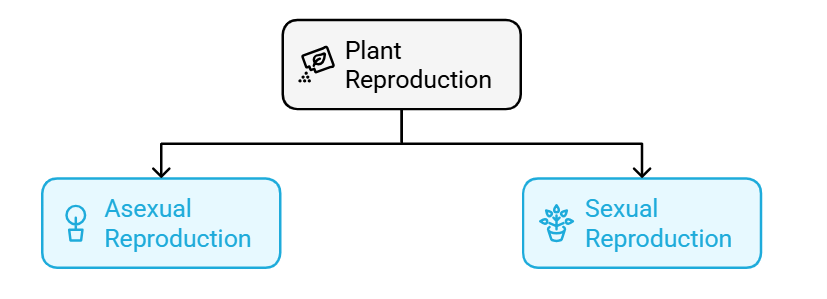
1. Asexual Reproduction
- It is a way of reproducing where offspring come from a single parent.
- The offspring inherit the traits of that parent only. As a result, these offspring are exact copies of the parent plant.
- Examples of asexual reproduction include vegetative propagation by roots, stems, layering, budding, cutting, etc.

2. Sexual Reproduction
- Sexual reproduction is a method of reproduction in plants where offspring are produced from a male and a female parent.
- The offspring inherit traits from both parents.
- Flowers are the reproductive organs of plants.
- After fertilization, flowers turn into fruits, which contain seeds. New plants grow from these seeds.
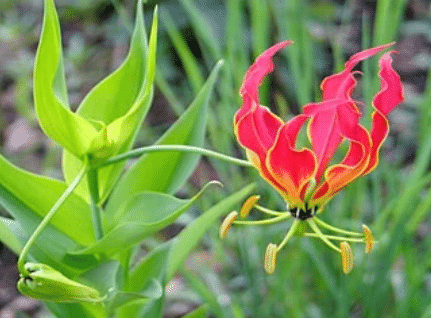
What is Vegetative Propagation?
The root, leaf and stem are called vegetative parts. The growth of new plants from vegetative parts is known as vegetative propagation.
Plants can also grow from spores, layering, and some other techniques. Let us learn about them all in detail.
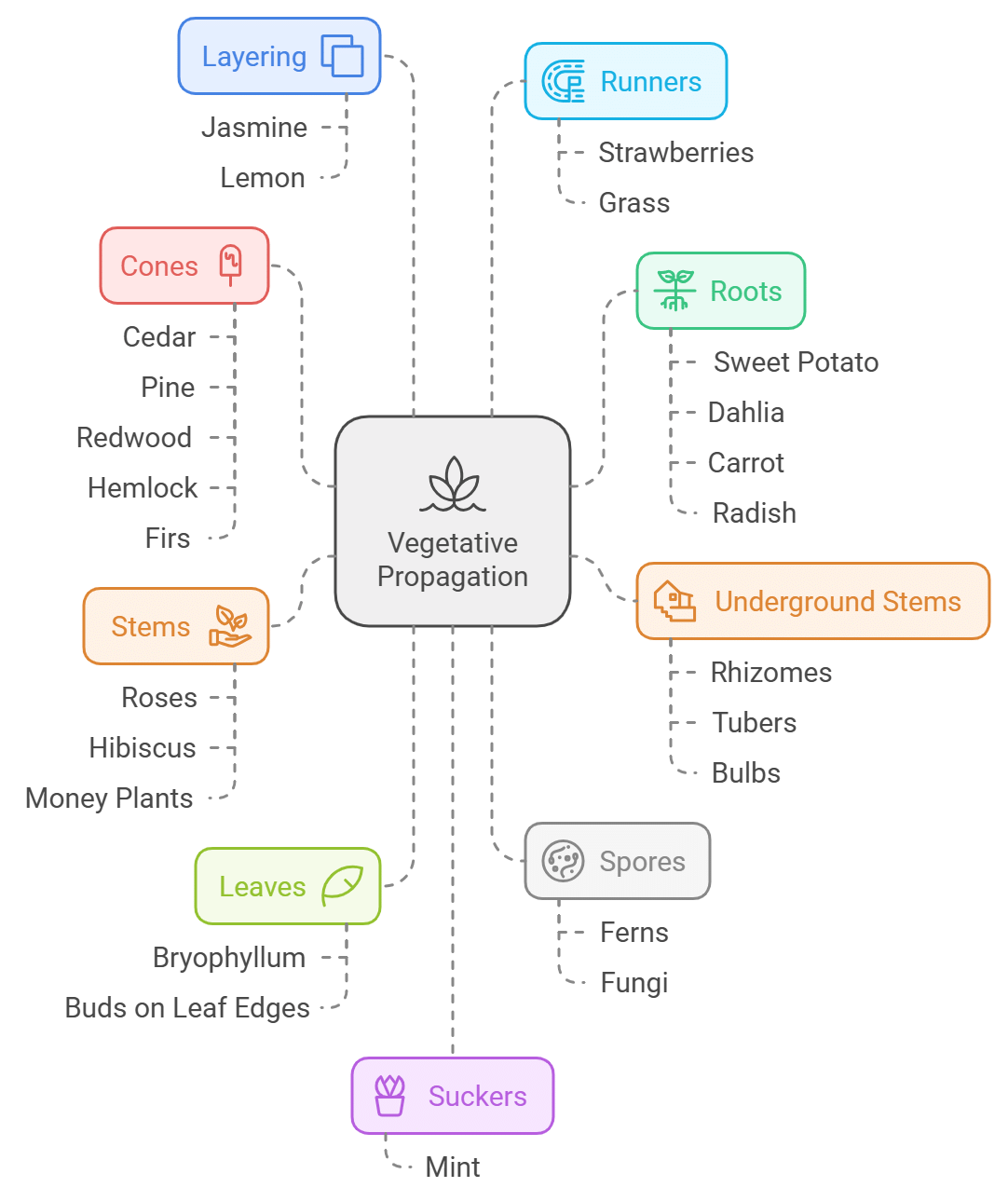 Methods of Vegetative Propagation & Examples
Methods of Vegetative Propagation & Examples
1. Plants from Roots
- Certain roots, such as those of sweet potato, dahlia, carrot, and radish, can sprout new plants.
- For example, if we slice off the top part of a carrot and put it in the soil, it will grow into a new plant.
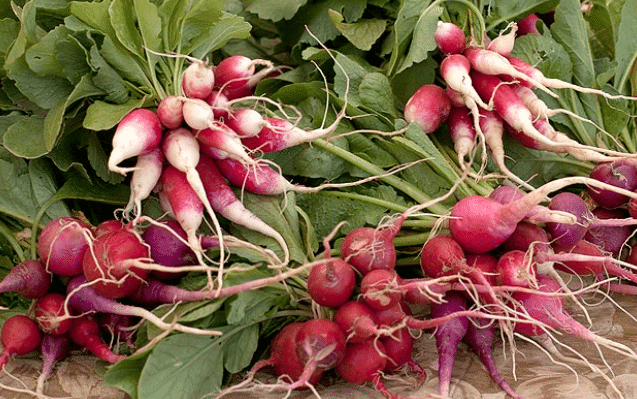 Radishes
Radishes
2. Plants from Leaves
- Sometimes, plants can grow from leaves.
- Bryophyllum is one such plant that makes new plants from its leaves.
- Small buds grow along the edge of the parent leaf.
- Eventually, they drop off and grow into new plants on the ground. Each bud can grow into a new baby plant.
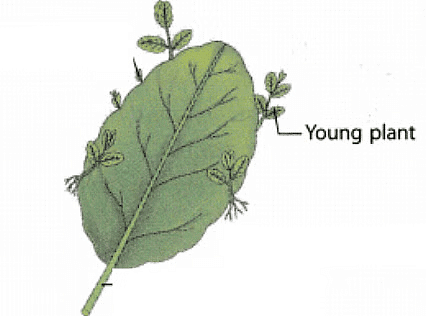 Bryophyllum
Bryophyllum
3. Plants from Underground Stems
Underground stems are modified structures of certain plants. They are of three types:
- Rhizomes, like those in ginger and turmeric, have roots growing from their bottom and green leaves from their top.
- Tubers, such as potatoes and yams, are swollen parts with nodes or eyes, each capable of sprouting into new plants.
- Bulbs, like onions and garlic, are also underground stems with buds on their sides that grow into shoots.
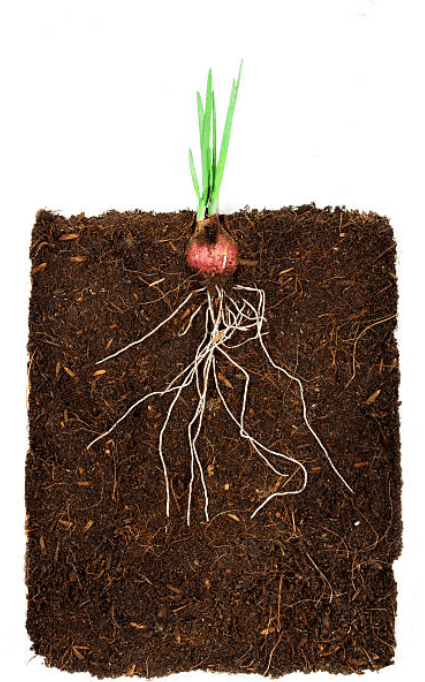 Underground Stem
Underground Stem
4. Plants from Spores
- Plants like ferns grow from tiny particles called spores, while fungi such as mushrooms and bread mould reproduce through spores.
- These spores are located underneath fern leaves.
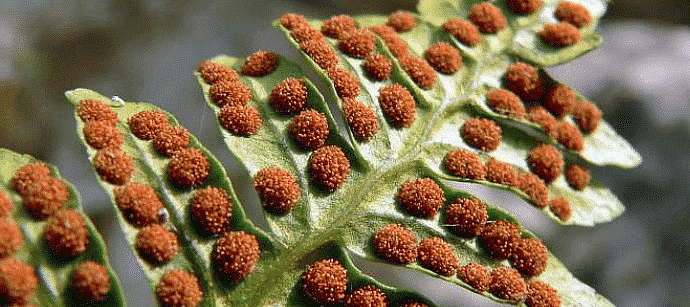 Spores
Spores
5. Plants from Layering
- Some plants can also be grown through a method called layering.
- In this process, the side branches are bent down towards the ground and covered with damp soil, leaving the tip exposed. After some time, new roots start to grow.
- Plants like jasmine and lemon reproduce using this method.
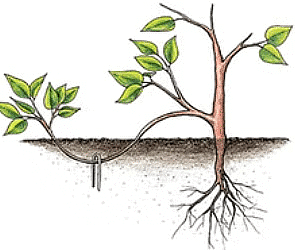 Layering
Layering
6. Runners
- A runner is a stem that grows flat along the ground, above it.
- Examples of runners are strawberries and grass.
- At the tip of the runner, buds can grow into new plants.
 Runners
Runners
7. Suckers
- Suckers are a lot like runners. They're underground stems that grow horizontally, just like runners.
- But, unlike runners, suckers start underground and then come up to make a new plant.
- Mint plants are an example of suckers.
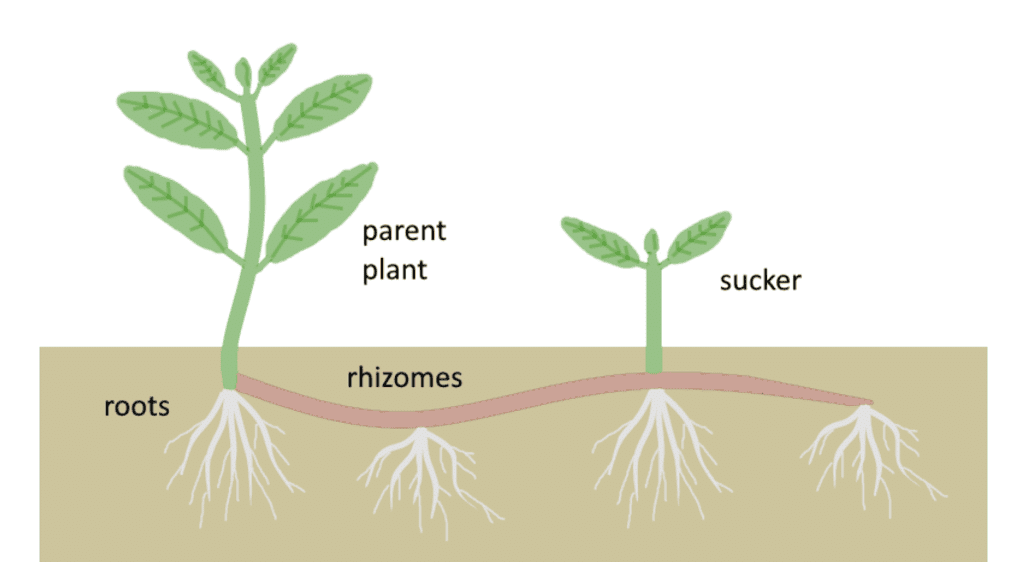 Suckers
Suckers
8. Plants from Cones
- Trees like cedar, pine, redwood, hemlock, and firs in hilly areas reproduce through cones.
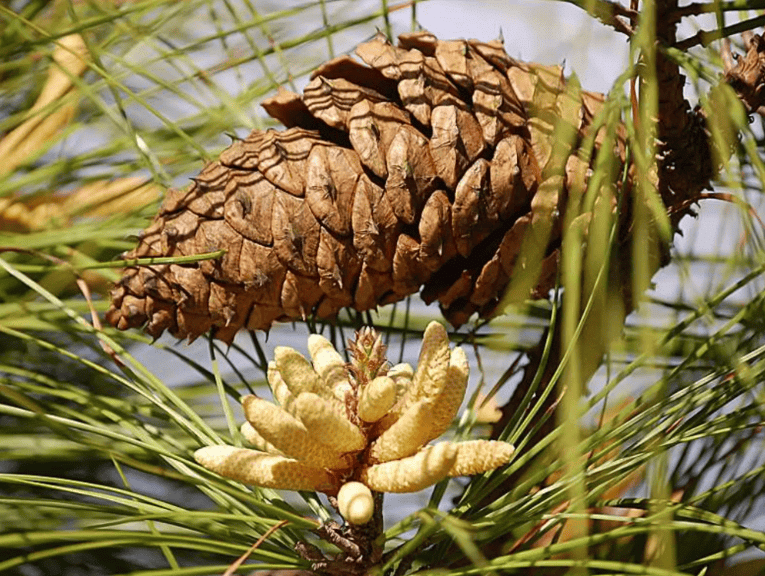 A Cone
A Cone
9. Plants from Stems
- Certain plants such as roses, hibiscus, and money plants can be propagated through stem cuttings. The original plant from which the stem is taken is referred to as the mother plant.
- The stem cutting is planted in soil, and after some time, it develops into a new plant.
- Potatoes, onions, and ginger are examples of plant stems that can generate new plants. Potatoes have buds, known as eyes, on them.
- Any portion of a potato containing an eye has the potential to sprout and grow into a new plant.
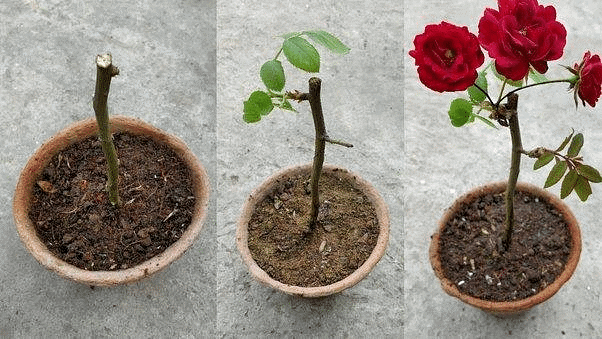 Rose from Stem
Rose from Stem
Cutting
In this method, the stems of the plants are cut into many small pieces. Each piece can develop into a new plant.
Advantages of Vegetative Propagation
- Growing new plants through vegetative propagation is quicker.
- It's a useful way to grow seedless plants, like grapes and bananas.
- Plants grown through vegetative propagation bloom and bear fruit faster than those grown from seeds.
Reproduction Through Seeds
Plants with flowers are known as flowering plants. When flowers mature, they become fruits which hold seeds. Therefore, flowers are the reproductive parts of flowering plants.
Parts of a Flower
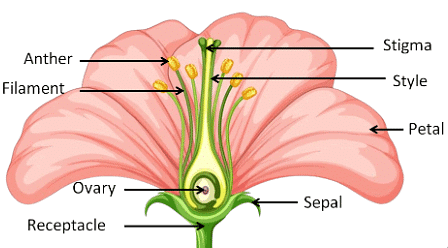 Parts of a Flower
Parts of a Flower
A flower has four main parts, arranged in circles at the base.
1. Calyx
- The outer layer is made of sepals.
- Sepals are green, leaf-like parts that protect the flower when it is a bud.
2. Corolla
- The next layer inside is made of petals.
- Petals are soft and colourful, and they are the most attractive parts of the flower.
- They help attract insects for pollination.
3. Androecium
- This is the male part of the flower, made of stamens.
- Each stamen has a filament with a top part called the anther.
- The anther holds pollen grains, which are yellow and powdery.
4. Gynoecium
- This is the innermost part of the flower, made of one or more carpels.
- The carpel is the female part of the flower, consisting of a long tube called the style.
- The bottom of the style is called the ovary, which contains ovules.
- The top part of the style is called the stigma.
These parts work together to help the flower reproduce.
Reproduction in Flowering Plants
Most flowering plants reproduce through seeds. This involves the following steps: Reproduction in Flowering Plants
Reproduction in Flowering Plants
- Adult plants make flowers.
- Flowers have both male and female components.
- The male parts hold tiny grains called pollen.
- Pollination happens when pollen from one flower moves to the female part of the same flower or a different one.
- After pollination, petals and stamens drop off. The ovary grows into a fruit, and ovules become seeds, a process known as fertilization.
- These seeds give rise to new plants, completing the plant's life cycle.
Growing Plants from Seeds
- Seeds are present inside fruits. New plants grow from seeds.
- Plants produce many seeds, but not all of them grow into new plants.
- Some seeds are eaten by animals or humans, while others may be weak or destroyed by wind or rain.
- Some seeds simply don't get the right conditions to grow.
- When a healthy seed gets the proper conditions—enough air, water, and warmth—it sprouts into a baby plant called a seedling. This process is known as germination.
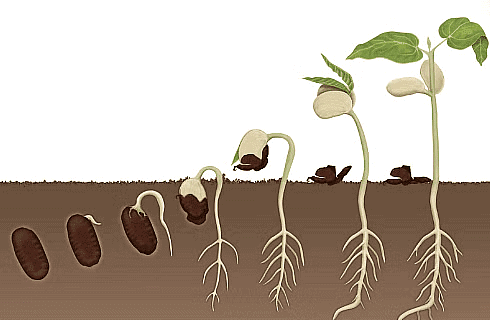 Germination
Germination
- During germination, the seedling relies on food stored in its seed leaves, called cotyledons. It uses this stored food until it can grow its own roots and leaves.
- Once the seedling has used up the food in the cotyledons, they shrink and fall off.
- The seedling continues to grow, developing in size and producing leaves that create food for the plant through photosynthesis.
- Meanwhile, the plant's roots absorb water and minerals from the soil.
Seed Dispersal
- When many seeds are planted too closely together, they compete for nutrients and struggle to receive enough sunlight, air, water, and space.
- This often leads to the death of many seedlings. It's important to scatter seeds over a wide area to ensure each seedling has adequate resources to grow.
- Some plants naturally scatter their seeds to prevent overcrowding. This process is known as seed dispersal. Certain seeds have adaptations that help them disperse.
- They may be carried away by wind, water, animals, or humans, which are known as agents of dispersal.
1. Dispersal by Wind
- Seeds with lightweight and hair-like or wing-shaped structures are spread by the wind.
- Examples include cotton and dandelion seeds, which have fine hairs and are effortlessly carried by the wind.
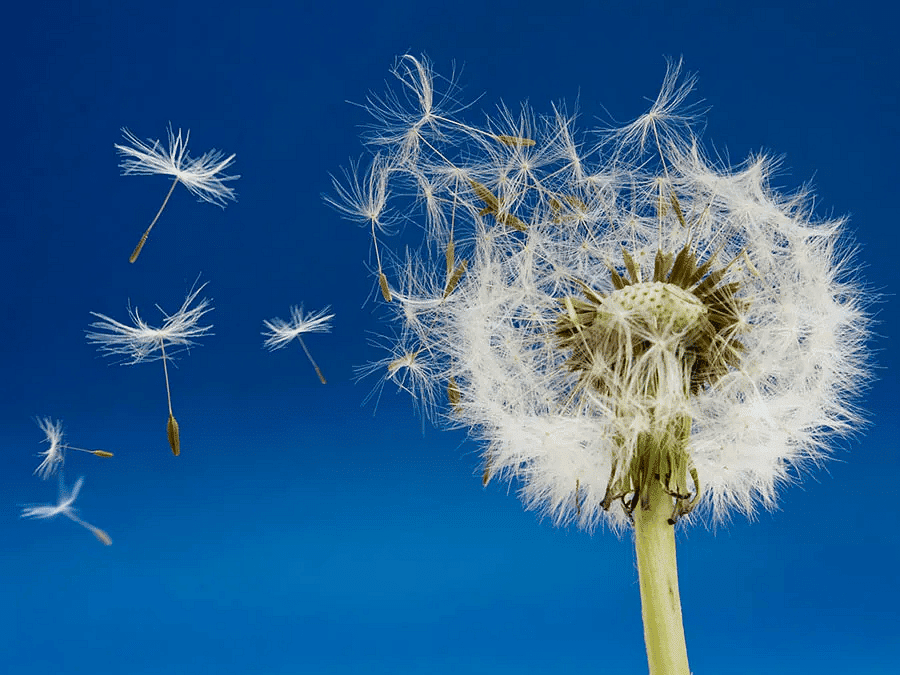 Seed Dispersal by Wind
Seed Dispersal by Wind
2. Dispersal by Water
- Seeds from certain plants can float on water and get carried away by it.
- For example, the lotus plant has a light, spongy fruit that floats on water, while coconuts have a fibrous covering that aids in their flotation.
- Both lotus and coconut seeds are dispersed by water.
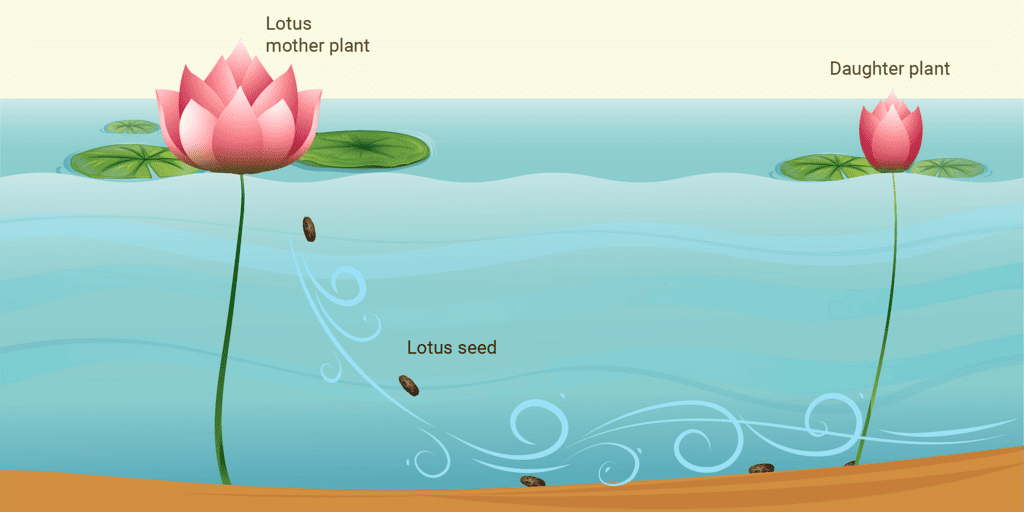 Seed Dispersal by Water
Seed Dispersal by Water
3. Dispersal by Animals
- Birds and animals consume fruits, and sometimes the seeds of these fruits remain unchanged as they pass through their digestive systems.
- This aids in the dispersal of seeds from the plant.
- Certain seeds, such as cocklebur, datura, and tiger claw, have spines or hooks that allow them to attach to the bodies of animals or birds, facilitating their transportation.
- Similarly, humans and animals consume fruits like mangoes, jamuns, and cherries, and discard their seeds, which also leads to their dispersal.
4. Dispersal by Explosion
- Some fruits like pea, poppy, balsam and bean burst open, scattering the seeds away from the plant.
Agriculture
- Agriculture involves growing plants on a large scale for various purposes, including food production.
- Crops are plants of a particular type grown extensively in a specific area during a specific season.
- Crops can be mainly divided into three types:
- Food crops: These include wheat, rice, potatoes, maize, and sugarcane.
- Oil-producing crops: Examples are sunflower and mustard.
- Fibre crops: These include cotton, and jute.
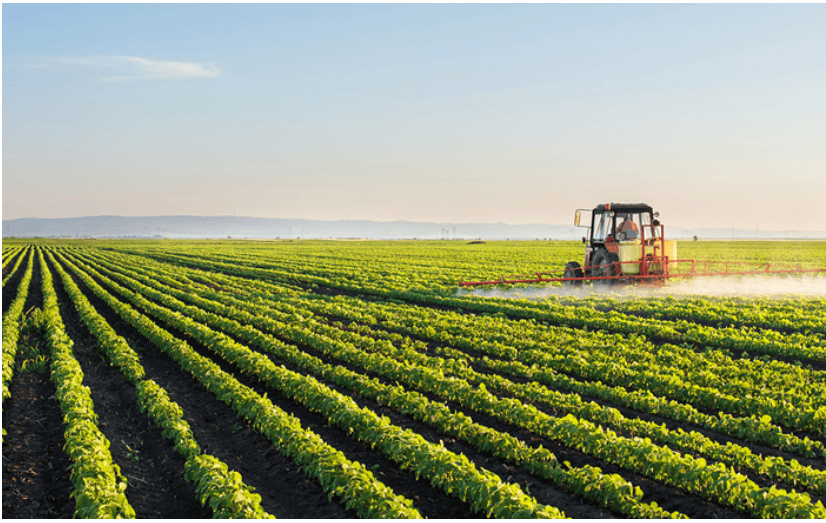 Agriculture
Agriculture
- Farmers cultivate different crops in different seasons: summer-grown and monsoon-harvested crops are called kharif crops (e.g., rice, maize), while those grown in winter and harvested in spring are called rabi crops (e.g., wheat, gram).
- Vegetables like cauliflower and peas thrive in winter, while brinjal and gourd prefer summer. Different plants require different types of soil: rice and jute prefer clayey soil with good water retention, wheat, jowar, and bajra grow well in sandy soil, cotton prefers black soil, and tea plants thrive in hilly areas like Assam and Darjeeling.
Essential Requirements to Produce Crops
- Farmers need knowledge about the soil, climate, and season for growing different crops.
- They should use high-yielding varieties of seeds.
- Proper irrigation is necessary to keep the soil moist when needed.
- The right amount of fertilisers should be added to the soil. There are two types of fertilisers:
- Organic fertilisers, which come from decaying plants and cow dung.
- Inorganic fertilisers, which are synthesized, such as urea and nitrates. - Farmers should use insecticides and pesticides to protect crops from insects. However, overusing pesticides can harm the soil and our health.
Stages of Agriculture
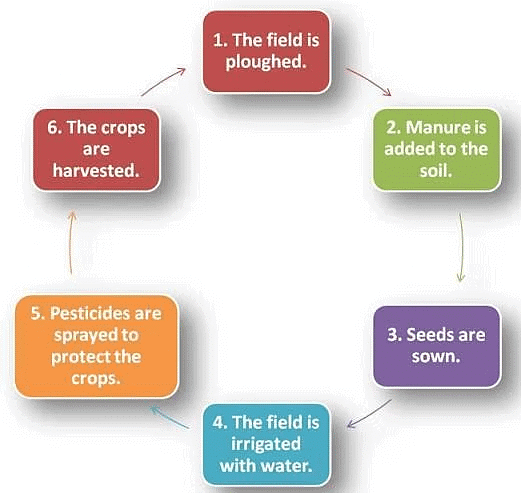 Stages of Agriculture
Stages of Agriculture
- The field is ploughed, which means digging and turning over the soil with a plough. This helps loosen the soil.
- Manures and chemical fertilisers are added to the soil to make it richer in nutrients.
- Seeds are sown.
- The crop is irrigated, which means supplying water to the land through pipes or channels so that the crop can grow.
- The crop is sprayed with pesticides to keep pests away and protect it.
- The crop is harvested, which means cutting and collecting it.
Protecting the Crops
To ensure healthy crops, we should:- Use proper fencing to protect crops from grazing animals like goats and cows.
- Safeguard crops from pests such as locusts and caterpillars, as well as diseases.
- Harvest and store ripened crops properly as grains.
- Keep grains safe from moisture and small animals by using air-tight containers.
|
42 videos|230 docs|45 tests
|
FAQs on Plant Life Chapter Notes - Science Class 5
| 1. What is the difference between vegetative propagation and reproduction through seeds? |  |
| 2. What are some common methods of vegetative propagation? |  |
| 3. What are the advantages of vegetative propagation over seed reproduction? |  |
| 4. How does the process of seed reproduction occur in plants? |  |
| 5. Why is understanding plant reproduction important in agriculture? |  |
















